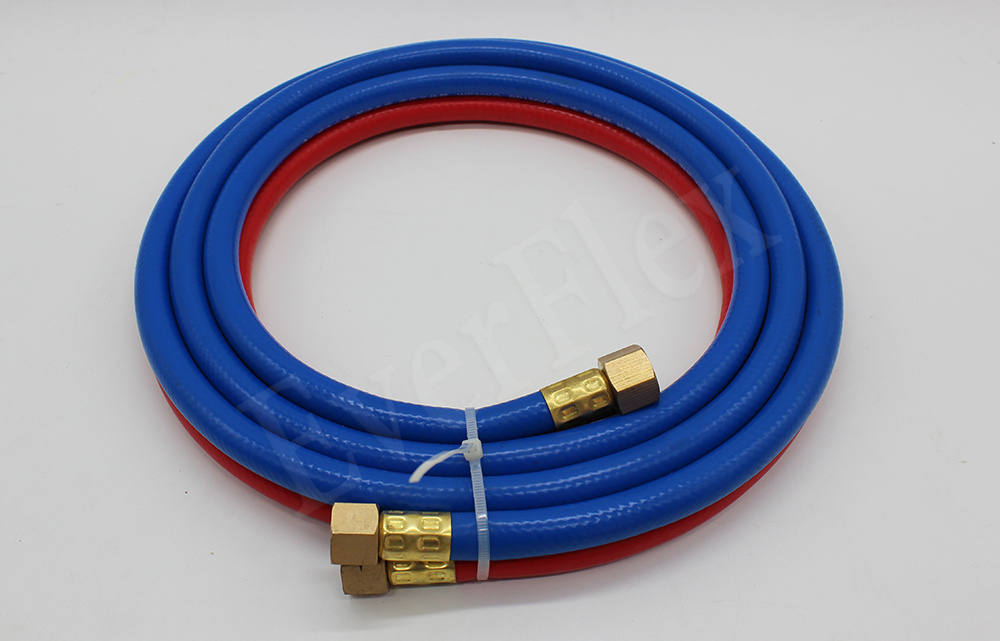Pay attention to the maintenance and use of oxygen hoses and acetylene hoses. Keep hoses clean and undamaged. Avoid sun, rain and snow. And prevent contact with substances that may damage the hose, such as acids, alkali, oils, etc. The storage temperature is -15℃~40℃, and the distance should be no less than 1 meter.
When using a new hose, the talc powder on the inner wall of the hose must be blown out. Prevent the welding gun passage from being blocked. During use, avoid external pressure and mechanical damage. Do not fold the tube.

Oxygen and acetylene hoses must not be mixed or replaced with each other. Do not use an oxygen hose to blow out clogs in acetylene hoses. At the same time, defects such as leakage and blockage of the welding gun should be checked and eliminated at any time to prevent the formation of a mixture of oxygen and acetylene in the hose. If a backfire occurs and fuel enters the oxygen hose, the hose can no longer be used and must be replaced with a new one. Because tempering often burns out the conditioning inner rubber layer, compressed pure oxygen is a strong oxidant. If you continue to use it, you will lose normal security.
Gas cutting operations require a large amount of oxygen output. Therefore, the valve of the earpiece (or oxygen pipeline) connected to the high-pressure end of oxygen should be fully opened to ensure sufficient flow and stable pressure. Although the low-pressure gauge has shown the working pressure, if the pressure suddenly drops when using oxygen, backfire is likely to occur, and the oxygen hose may be diverted to cause an explosion.




